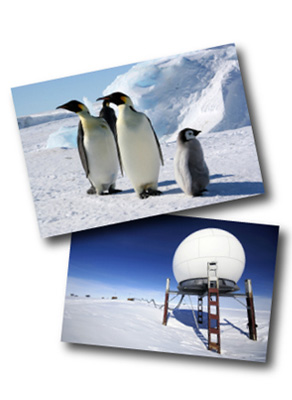One of the most inhospitable places on the planet, Antarctica measures some one and a half times the land mass of the USA. As well as being the coldest of all the continents, it is the windiest and has the highest average elevation.
Winter temperatures drop as low as –90c, while in summer they rise to between -30c and -20c, though at the Pole the temperatures never rise much above -30c due to the elevation. (At the coast, summer does see temperatures of 5c and sometimes as much as 15c.)
As average annual precipitation is less than two inches of snow, the continent is technically the largest desert in the world. However, Antarctica is also a huge store of natural water, accounting for 70% of the world’s fresh water, albeit in frozen form.
Antarctica is surrounded by the Southern Ocean on all sides, renowned for its stormy seas. This isolation meant that the first confirmed sightings of the continent were not until 1820 and it wasn’t until the early 1900s that expeditions to explore this vast ice wilderness began. Several British expeditions led the way, but it was the Norwegian team led by Roald Amundsen that in December 1911 first reached the geographic South Pole – the southernmost point on the planet (not to be confused with the magnetic South Pole, which is much more accessible from the coast and was reached much earlier by a Shackleton-led expedition). Scott’s team reached the Pole just a month after the Norwegians, but failed to make the return journey.
Wildlife in Antarctica is limited to the coastal areas and includes penguins, seals and some Antarctic birds. The snow petrel has occasionally been spotted far inland. Antarctic flora comprises mainly lichens and mosses, which grow during the summer and again are limited to the coastal areas where temperatures occasionally rise above freezing.
